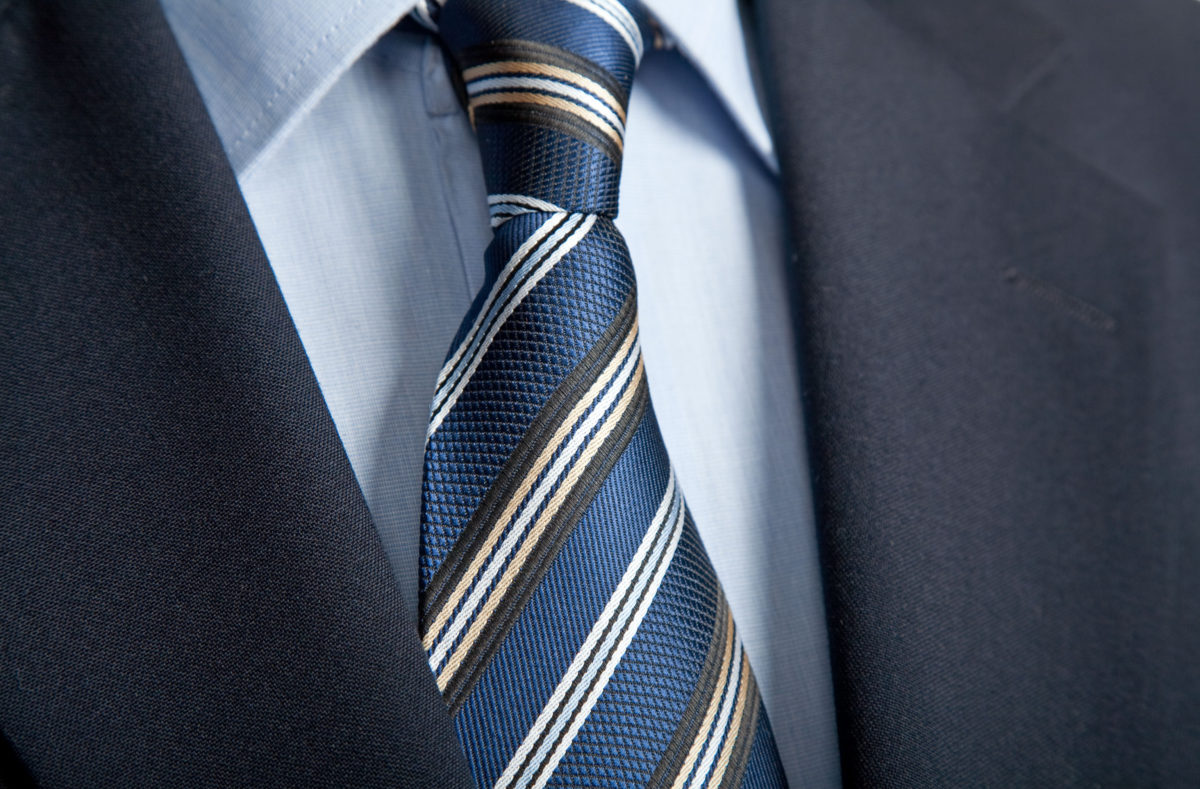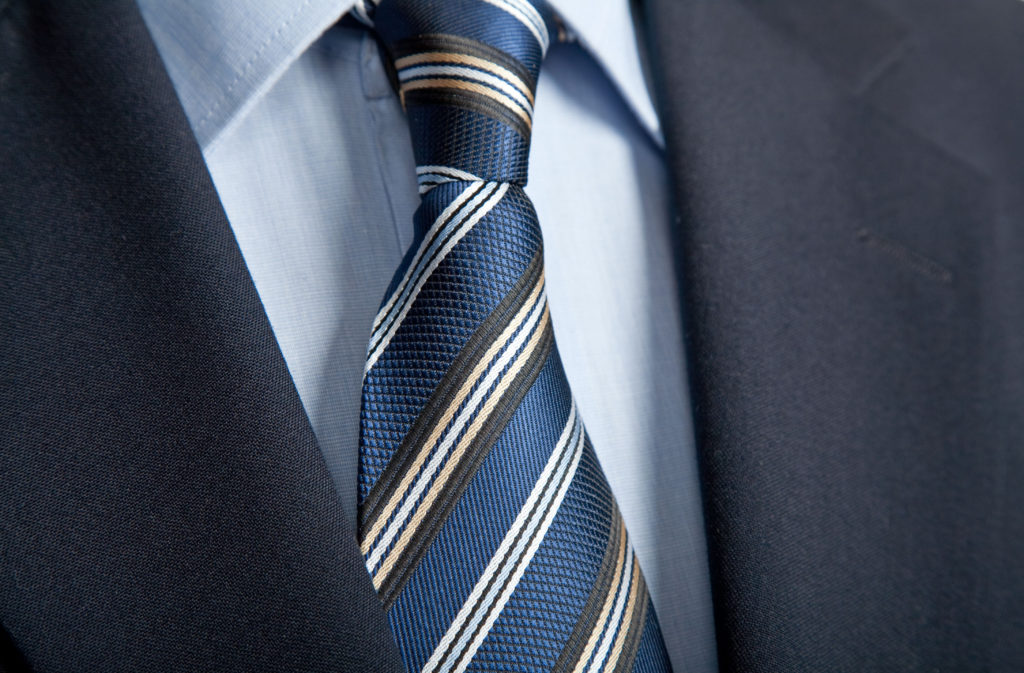The Do’s and Don’ts of Professional Business Attire


When it comes to men’s professional business attire, it may seem that we’ve been in a safe territory for a long time.
The two-piece suit, or lounge suit to give it its formal name, is certainly here to stay. After a long evolution, it emerged as the standard professional dress around the 1920s and with minor tweaks has been around ever since.
However, times and styles have changed, and even in the professional environment, there’s room for a business casual style. However, this does not mean that styling is any less important than it once was.
Join us on a journey through the do’s and don’ts of professional business attire.
Professional Dress – Dont’s
OK – let’s get the bad stuff out of the way first. We’ve all seen them, but hopefully never worn them.
Here are the absolute don’ts of professional business dress:
Too Tight or Too Short
No ifs, no buts, there is a big difference between fitted and too tight, and you know it. Don’t go there. Buy for the size you currently are, not hope to be. Alterations can be made later if needed.
Another offender is suit pants, jackets or shirts that are too short. This can be a challenge for the taller man but needs to be addressed. See below ‘Get the Pant Length Right’.
Scuffed Shoes
If you want to present a professional appearance, make sure your shoes don’t let you down.
At all times, shoes should be clean, polished, and look their best.
Short-Sleeved Shirts
If you’re reading this article, you’re probably not looking to follow the ‘Walter Mitty’ school of fashion.
They may be comfortable, but short-sleeved shirts of any description have no place in the professional business wardrobe.
Professional Dress – Do’s
Your suit is one chance to make an unforgettable first impression. Here’s how to ensure its for all the right reasons:
Get the Pant Length Right
For pants, aim for the half or medium ‘break’.
That is, the pants sit lightly on top of your laces and cover the upper part of the rear of your shoe. This is a safe look for men of all heights and can be obtained with the help of a tailor.
Get a Tailor Involved
Every man’s body is different and what fits well on one may sag, droop or bulge on another.
Bespoke tailoring ensures that your suit perfectly matches the contours of your body. This allows you to choose a style that flatters you, rather than draws attention to flaws.
If you buy off the rack, consider having a suit professionally altered to achieve the custom look.
Get the Tie Right
The right tie at the right length will set off your suit and give you confidence.
The end of the tie should sit just at the top of your belt. Please note that tucking it in would go firmly in the don’ts category.
Professional business attire staples include bold block colors and diagonal stripes. Avoid anything too busy or whimsical. Narrower styles are currently in and make sure that you nail the knot.
Business Casual – Dont’s
Business casual may have fewer formal ‘rules’ than professional business attire, but don’t let your guard down. A good rule of thumb is it’s less embarrassing to overdress at first, then tone it down.
Here are the definite pitfalls to avoid:
Denim
This could seem like a controversial starter, as some companies will allow denim as business casual. If you’re in doubt, check first before you arrive for your first day at work looking like a dress-down Friday.
If denim is allowed, go for a block color without fade and a smart cut. Offset with the right blazer in a contrasting color, you can still put the business into business casual.
Sneakers
Sneakers come under the heading of ‘casual’.
There’s nothing about them that says business. They’re best left at home for weekends and working out.
Wear Statement Pieces
Like wearing an overly bright tie with a business suit just spoils the look, so wearing a statement shirt or loud pants just won’t cut it when you’re trying to nail business casual.
So consign that Hawaiian shirt to the weekend-only section of your closet.
Business Casual – Do’s
Don’t let the don’ts put you off – business casual is a great look and an easy one to get right.
Smart Pants
A well-cut pair of chino pants will make a great impression, especially if paired with a jacket of contrasting color.
We’ve called them smart because they’re sharp, not because they are suit pants. Cotton pants are fine, but they still need to be clean, well pressed, and in pristine condition.
Simple Tweaks
With business casual, the clue’s in the name. It’s still business wear, but let’s dress it down a little.
First of all, try keeping the suit, but ditching the tie.
Try mixing out your jackets with one of a color that contrasts with your pants, but doesn’t clash.
Don’t be afraid to accessorize with a bright pocket square to add a pop of color without looking garish.
Stick to the Classics
The tried and true formula for business casual is smart pants, a long-sleeved shirt with an open collar, a well-cut blazer or jacket, and smart shoes.
There is no need to try to reinvent this. The key is having good quality pieces, in great condition, that complement each other and your physique.
If you struggle to find shirts that fit well, consider tailor-made custom shirts. You have total control over style and fabric, and you can discuss with your tailor what will go well with your current wardrobe.
